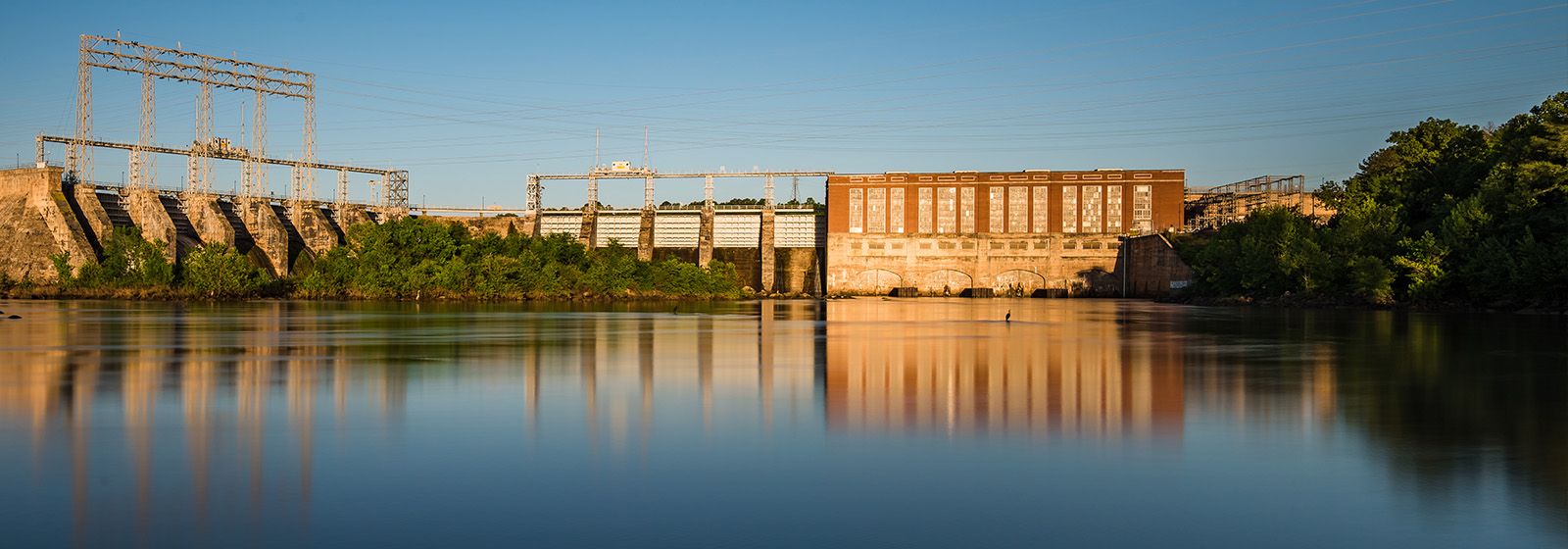Tega Cay, SC (Tega Cay Sun) – Lake Wylie, nestled among the picturesque landscape of the Catawba River basin, holds a rich history that dates back to the early 20th century. Its creation was intertwined with the advancement of hydroelectric power and the determination of visionary individuals.
The roots of Lake Wylie can be traced back to 1904 when the Catawba Power Company constructed the Catawba Dam and Power Plant near India Hook, South Carolina. By impounding the Catawba River, the company created Lake Catawba, serving as a vital source of hydroelectric power. In 1905, the Catawba Power Company merged with the Southern Power Company, leading to the expansion of its operations.
Significant developments occurred in 1924 when the Southern Power Company raised the dam’s level and built the new Catawba Hydroelectric Station, which replaced the original one. This remarkable facility opened in August 1925, resulting in an impressive increase in the surface area of Lake Catawba, now spanning 13,400 acres. The Southern Power Company further evolved and merged with the Duke Power Company in 1927, solidifying its position as a dominant force in the region’s power generation.
The turning point for the lake and power station came in October 1960 when the power station was renamed the Wylie Hydroelectric Station. In a fitting tribute to W. Gil Wylie, one of the founders of the original Catawba Power Company and a significant figure in the evolution of the lake, it was renamed Lake Wylie.
Lake Wylie is indeed one of the oldest lakes in the Catawba River basin and stands proudly as one of 11 lakes connected through the Duke Power chain system. With a vast surface area of approximately 13,443 acres and 325 miles of shoreline, the lake stretches from the Mountain Island Dam in North Carolina to the Wylie Dam on its southern end. Its average depth of just over 20 feet offers a serene and picturesque setting for visitors and residents alike.
Beyond its remarkable size and significance in power generation, Lake Wylie holds a historical mystery submerged beneath its waters. Decades ago, a stone monument marking the South Carolina-North Carolina state line was erected, yet its exact location remains elusive. Efforts to find this three-foot-high marker have been underway by the North Carolina-South Carolina Boundary Commission, as its discovery could potentially alter a 65-mile straight stretch of the state line traversing six counties.
The Catawba River itself carries its own tale, named after the Native American tribe that once inhabited the region, the Catawba Indians. In their native tongue, they referred to themselves as Yap Ye Iswe, meaning “People of the River.” This ancestral connection further enriches the significance of Lake Wylie and the surrounding area.
The vision for Lake Wylie’s hydro station began in 1899 when Dr. Walker Gil Wylie and his brother, Dr. Robert H. Wylie, conceived the idea of generating power for a nearby textile mill at India Hook Shoals near Rock Hill, SC. The realization of their dream came with the incorporation of the Catawba Power Company, supported financially by James “Buck” Duke, paving the way for future success.
As time progressed, Lake Wylie’s identity evolved. Originally known as “Catawba Lake” when the Catawba Hydro Station was constructed in 1904, it underwent a transformation in 1960, being rechristened as Lake Wylie in honor of Dr. Walker Gil Wylie. This change of name symbolized the deep respect and appreciation for his leadership as the former president of the Southern Power Company, which had merged with Duke Power Company years before.
Today, Lake Wylie’s Hydroelectric Station boasts four generating units and serves as a key landmark along the Catawba River in York County, SC, near Fort Mill. Its name stands as a testament to Dr. Gil Wylie’s contributions to the Southern Power Company, a company that laid the groundwork for Duke Energy’s prominence.
Lastly, a beloved landmark on Lake Wylie, the Buster Boyd Bridge, has been a symbol of connection and progress since 1923. Spanning the lake, it serves as a vital link between NC 49 and SC 49, bridging the border between North and South Carolina. Recently rebuilt to accommodate four lanes of traffic, the bridge remains a testament to the region’s evolution and growth.
The history of Lake Wylie is a fascinating journey of human ingenuity, energy exploration, and cultural connections. From its humble beginnings as the Catawba Lake to its transformation into Lake Wylie, this remarkable body of water has played a crucial role in shaping the region’s landscape, energy production, and historical legacy. As we continue to cherish and explore its wonders, Lake Wylie’s story remains an enduring testament to the spirit of progress and determination that shaped its existence.








